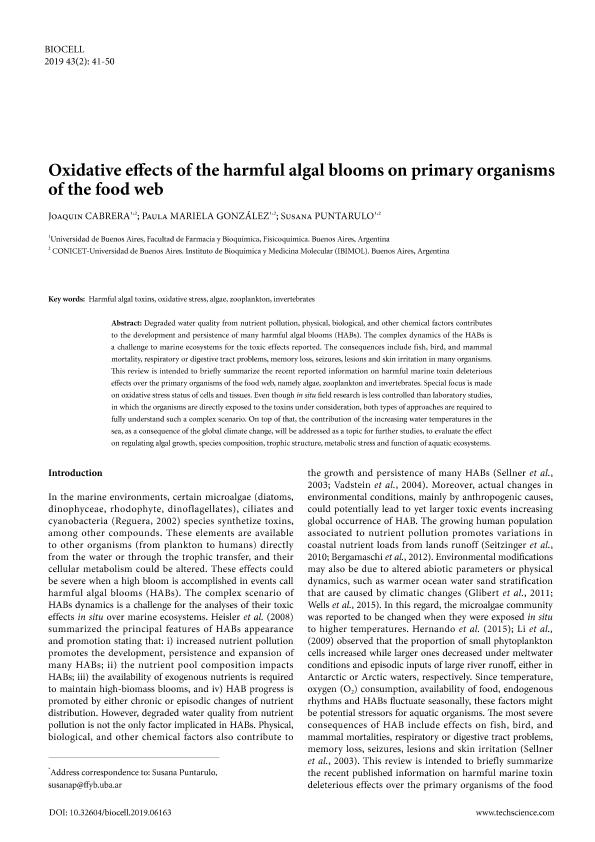Artículo
Oxidative effects of the harmful algal blooms on primary organisms of the food web
Fecha de publicación:
06/2019
Editorial:
Instituto de Histología y Embriología
Revista:
Biocell
e-ISSN:
1667-5746
Idioma:
Inglés
Tipo de recurso:
Artículo publicado
Clasificación temática:
Resumen
Degraded water quality from nutrient pollution, physical, biological, and other chemical factors contributes to the development and persistence of many harmful algal blooms (HABs). The complex dynamics of the HABs is a challenge to marine ecosystems for the toxic effects reported. The consequences include fish, bird, and mammal mortality, respiratory or digestive tract problems, memory loss, seizures, lesions and skin irritation in many organisms. This review is intended to briefly summarize the recent reported information on harmful marine toxin deleterious effects over the primary organisms of the food web, namely algae, zooplankton and invertebrates. Special focus is made on oxidative stress status of cells and tissues. Even though in situ field research is less controlled than laboratory studies, in which the organisms are directly exposed to the toxins under consideration, both types of approaches are required to fully understand such a complex scenario. On top of that, the contribution of the increasing water temperatures in thesea, as a consequence of the global climate change, will be addressed as a topic for further studies, to evaluate the effect on regulating algal growth, species composition, trophic structure, metabolic stress and function of aquatic ecosystems.
Palabras clave:
ALGAE
,
HARMFUL ALGAL TOXINS
,
INVERTEBRATES
,
OXIDATIVE STRESS
,
ZOOPLANKTON
Archivos asociados
Licencia
Identificadores
Colecciones
Articulos(IBIMOL)
Articulos de INSTITUTO DE BIOQUIMICA Y MEDICINA MOLECULAR
Articulos de INSTITUTO DE BIOQUIMICA Y MEDICINA MOLECULAR
Citación
Cabrera, Joaquin; González, Paula Mariela; Puntarulo, Susana Ángela; Oxidative effects of the harmful algal blooms on primary organisms of the food web; Instituto de Histología y Embriología; Biocell; 43; 2; 6-2019; 41-50
Compartir
Altmétricas




